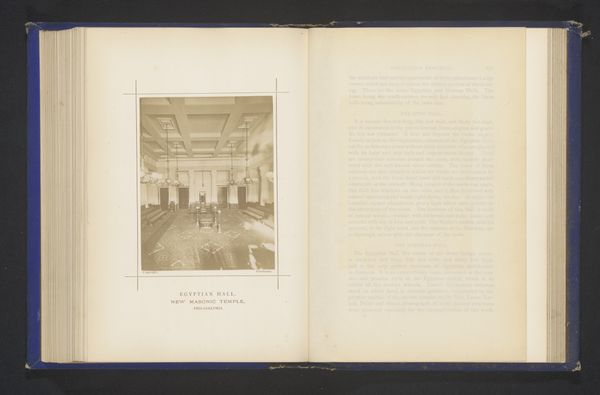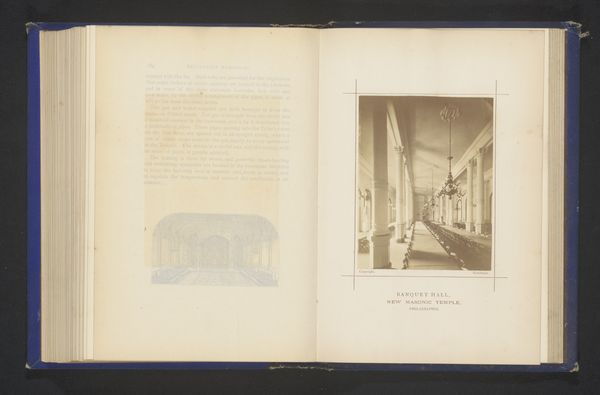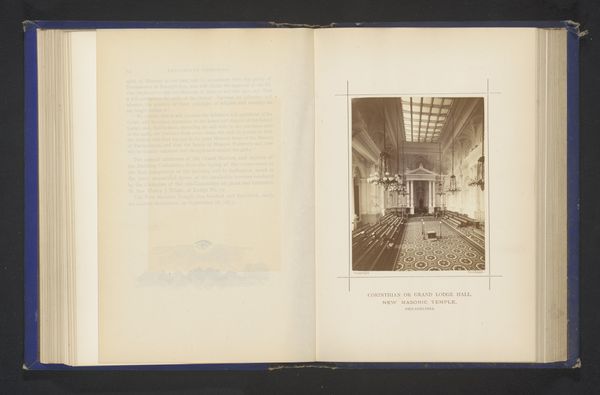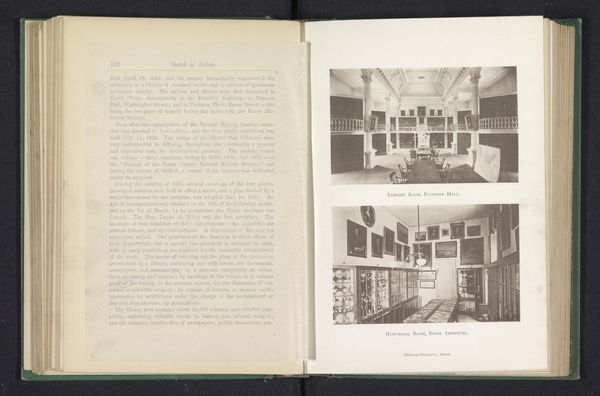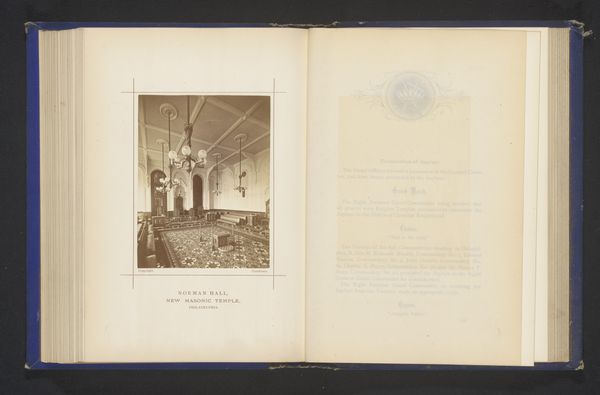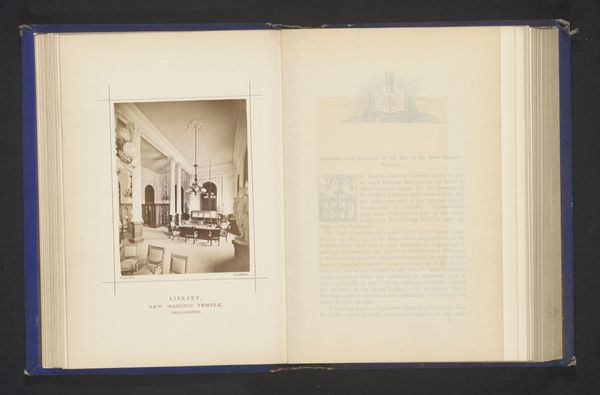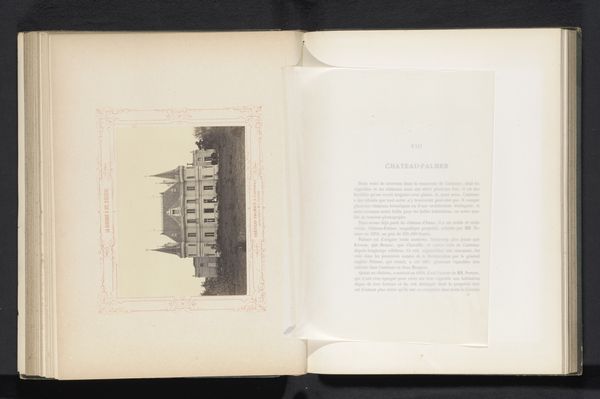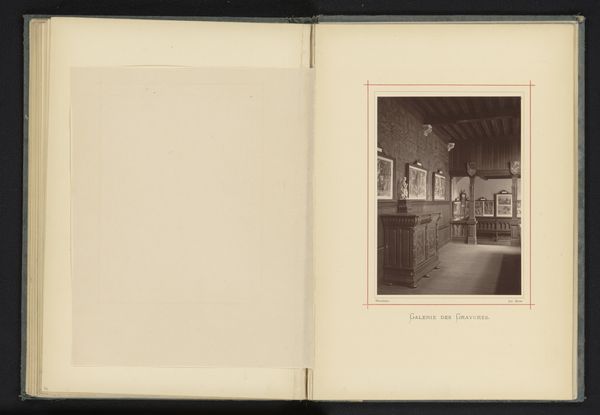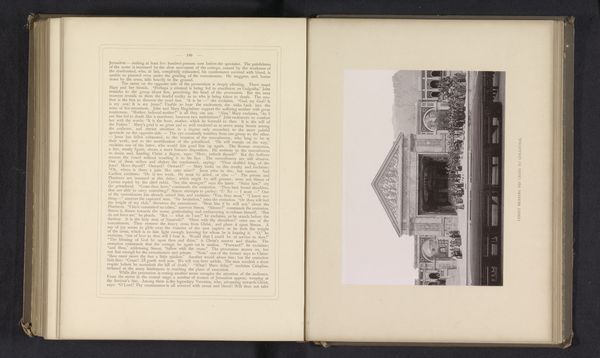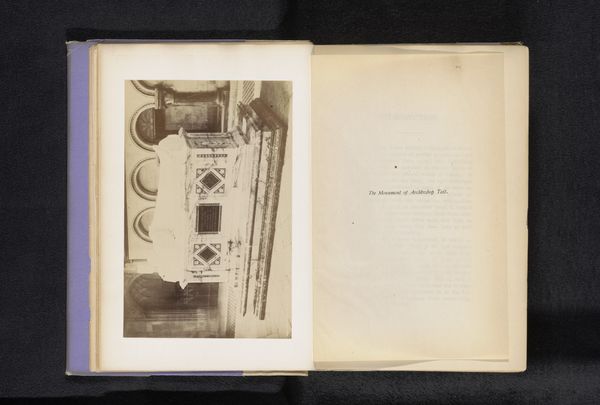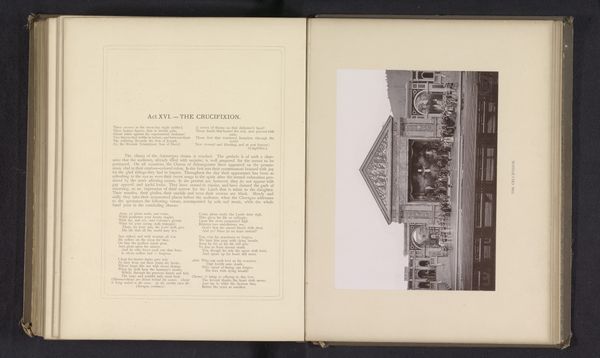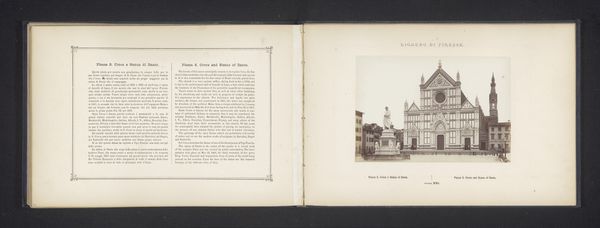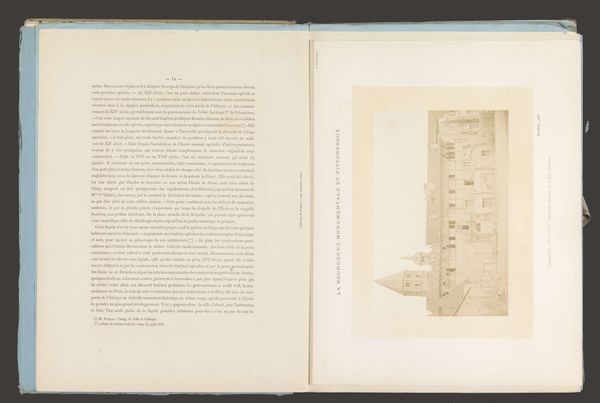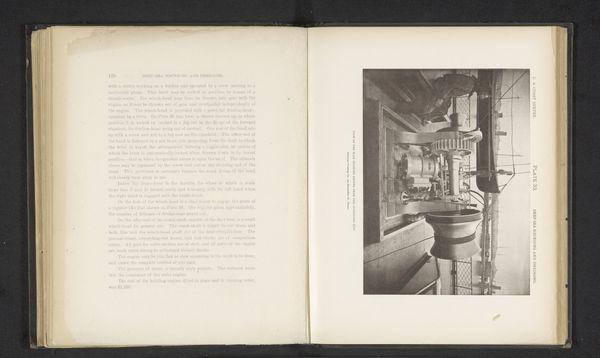
print, photography, site-specific
#
aged paper
#
homemade paper
# print
#
typeface
#
photography
#
fading type
#
geometric
#
stylized text
#
site-specific
#
thick font
#
cityscape
#
white font
#
handwritten font
#
thin font
#
historical font
Dimensions: height 120 mm, width 93 mm
Copyright: Rijks Museum: Open Domain
Curator: Here we have a photographic print by Frederick Gutekunst, capturing the "Interior of the Masonic Temple in Philadelphia." It is believed to have been taken before 1874. Editor: It strikes me as surprisingly austere. I expected more overt symbolism or ornamentation, but it's quite…geometric, and the palette is subdued. Curator: The subdued tones are likely a consequence of early photographic processes and aged paper rather than a deliberate aesthetic choice. Look closely at the facing page; we have an architectural rendering and substantial text. The photograph’s formal composition adheres strictly to a grid, with benches lining the walls and a central carpet design drawing the eye toward a vanishing point. The photograph as artifact reveals a specific organization of the image that is mirrored on the printed page, indicating a cohesive design for public consumption. Editor: Ah, but is that the intended effect? This presentation reminds me how Freemasonry, despite its elaborate rituals, has historically attracted accusations of secrecy and exclusion. Do you think this restrained representation served a strategic public function, perhaps attempting to convey respectability or allay public fears about what took place within those walls? Curator: Possibly, but one cannot dismiss the importance of documenting the construction and aesthetic value of the architecture itself. Look at the typeface choices here—a contrast between elaborate serif fonts and the cleaner sans-serif used to identify the Ionic Hall. They establish an ordered structure but also allow a space for contemplation by use of varying stylistic gestures. Editor: The light, filtered and diffused through what must have been expansive windows, plays such an important role here. Curator: Yes, the manipulation of light and shadow contributes significantly to its overall spatial dynamics. The high ceilings also amplify the feeling of solemnity and perhaps an otherwordly calm, even today. Editor: What a complex dance between institutional presentation, artistic documentation, and historical interpretation. The simplicity hides much depth. Curator: Agreed. The tension between revelation and concealment adds layers of intrigue to an otherwise straightforward image.
Comments
No comments
Be the first to comment and join the conversation on the ultimate creative platform.
